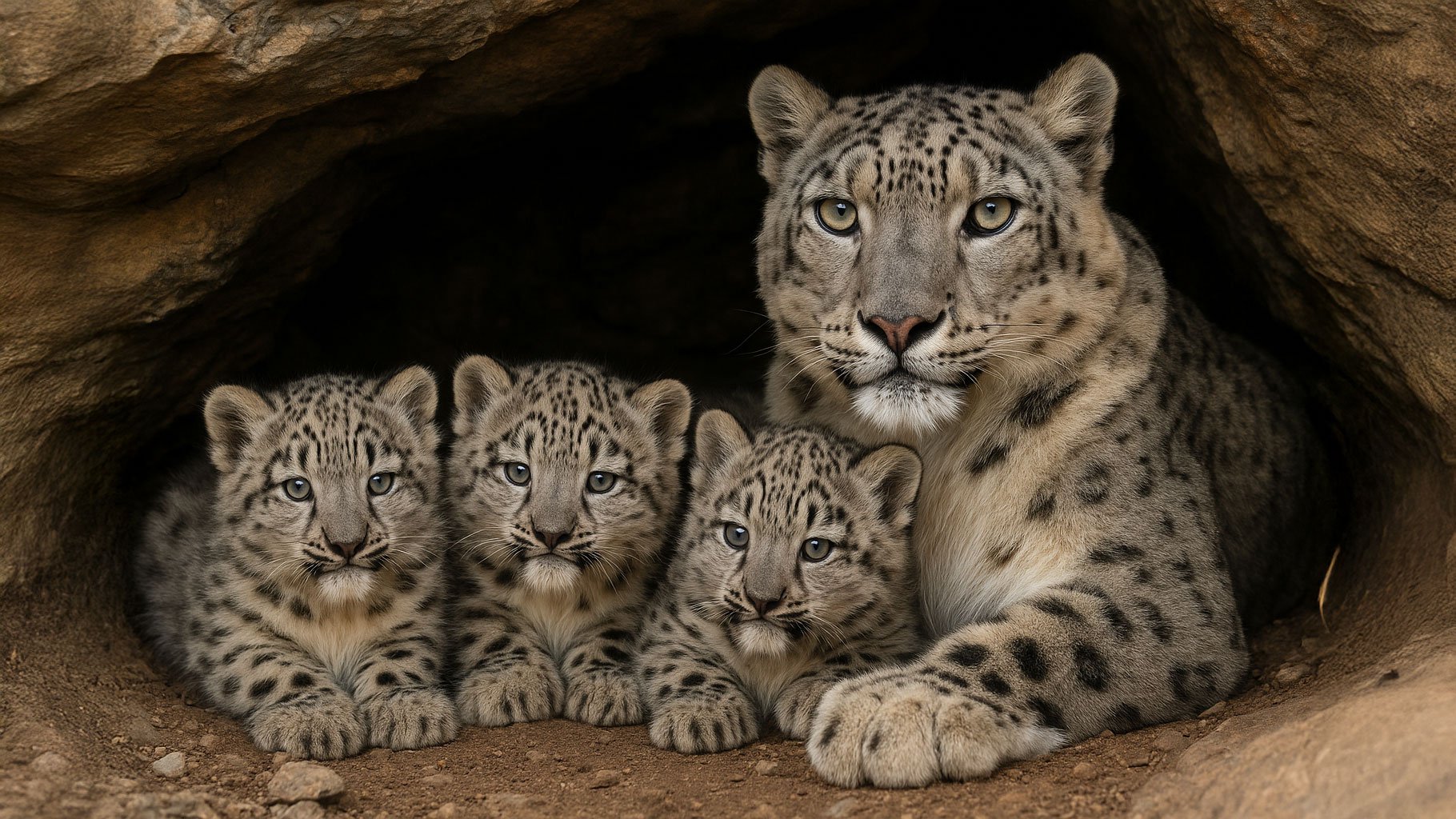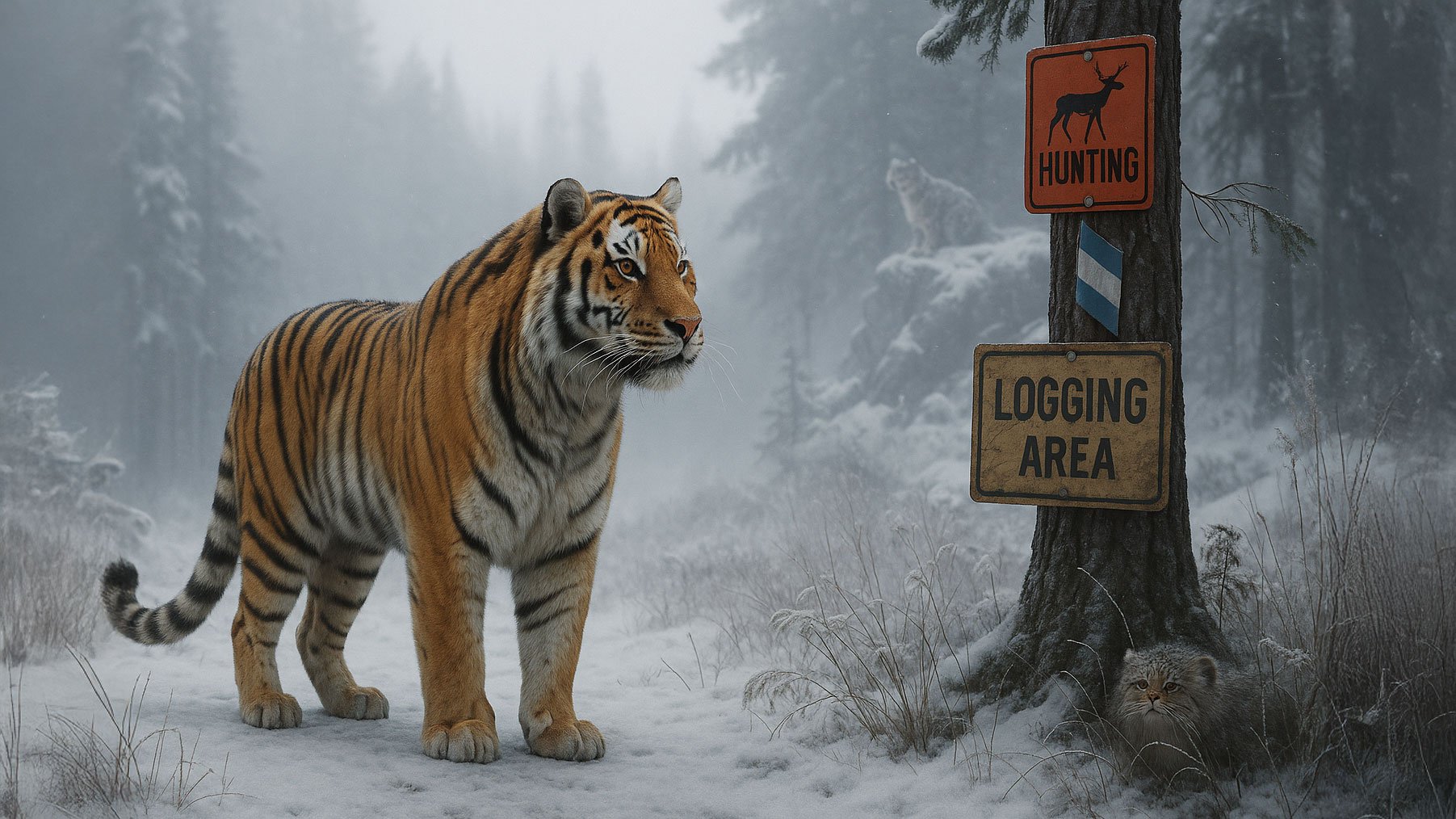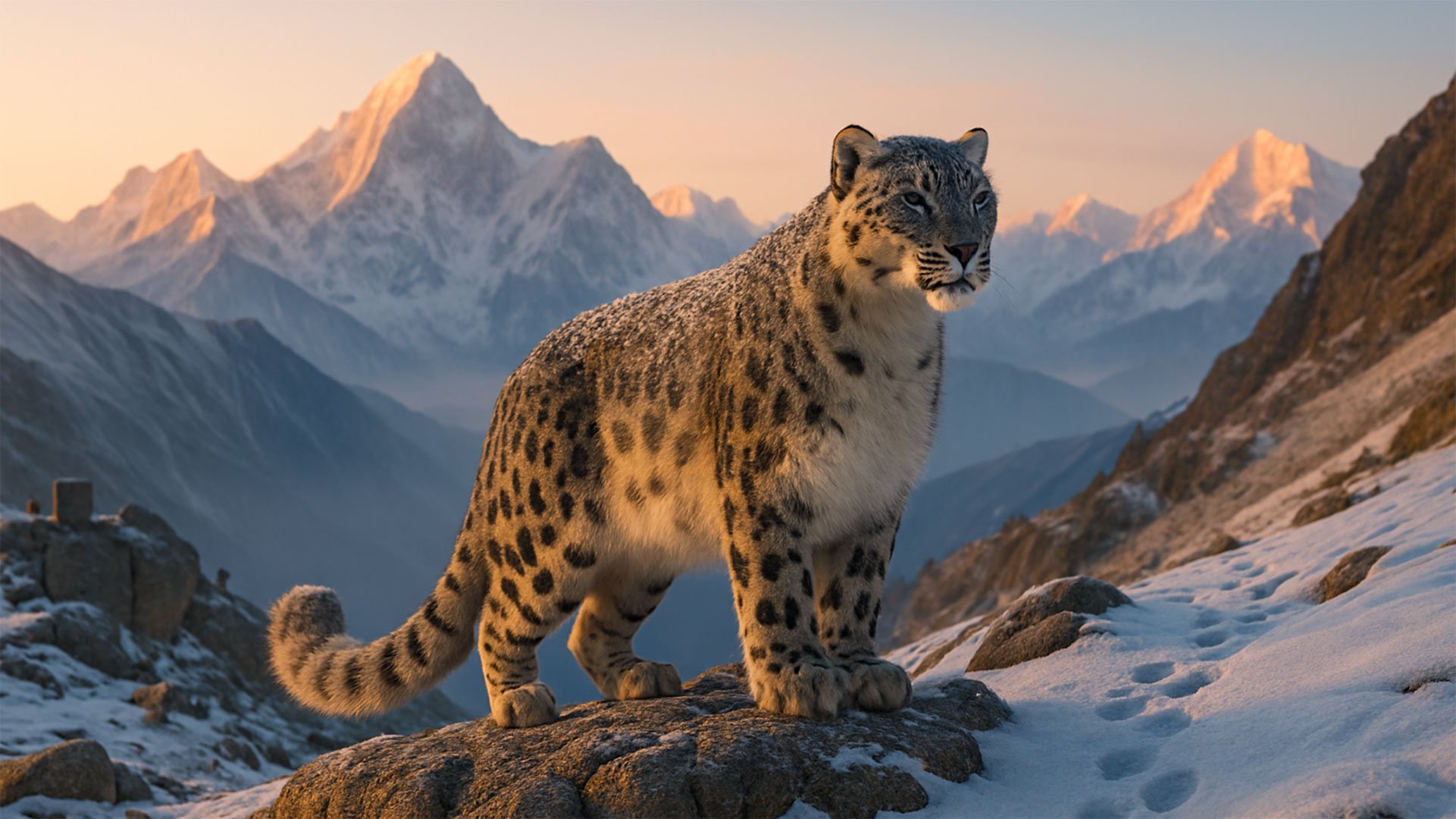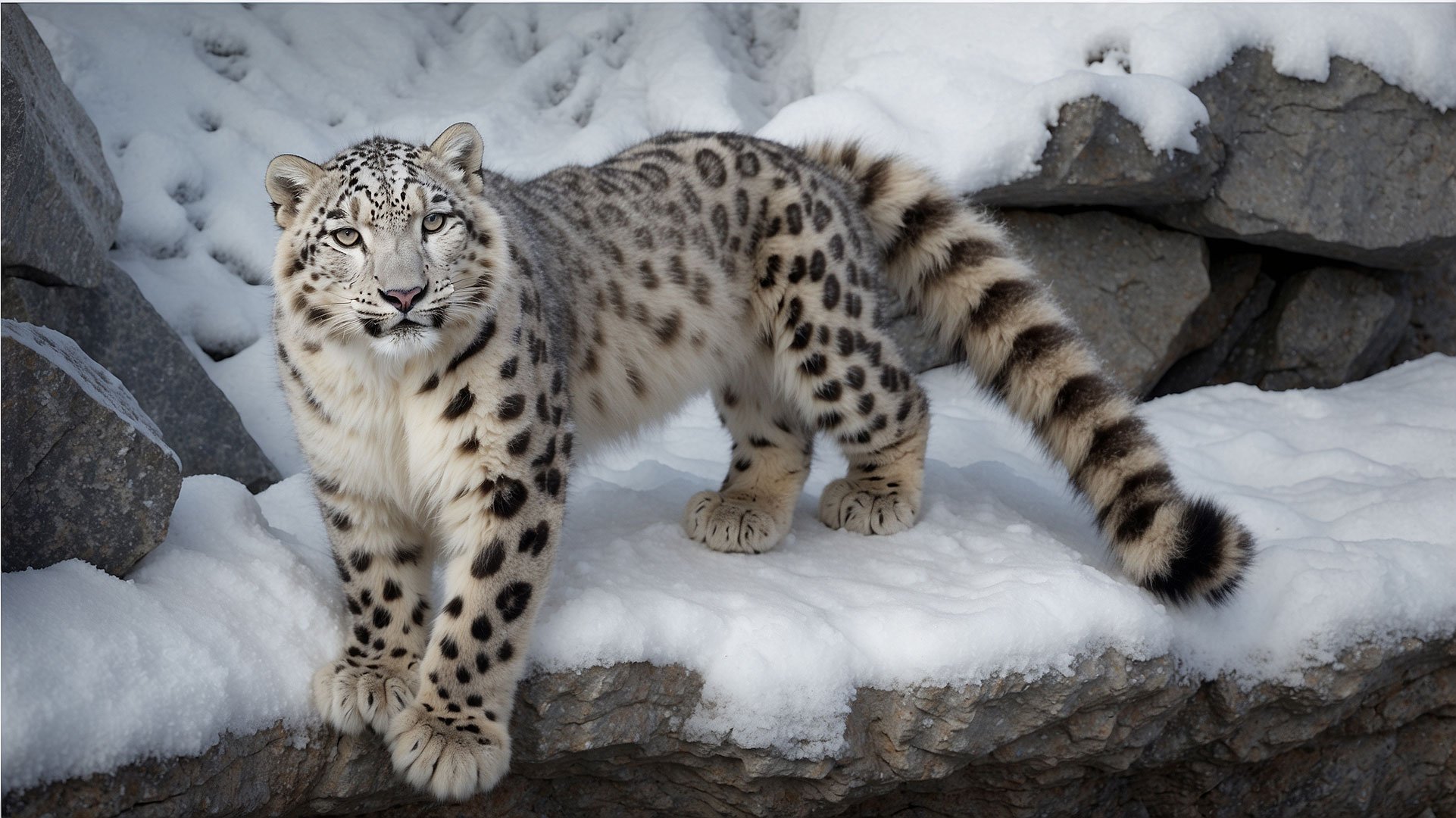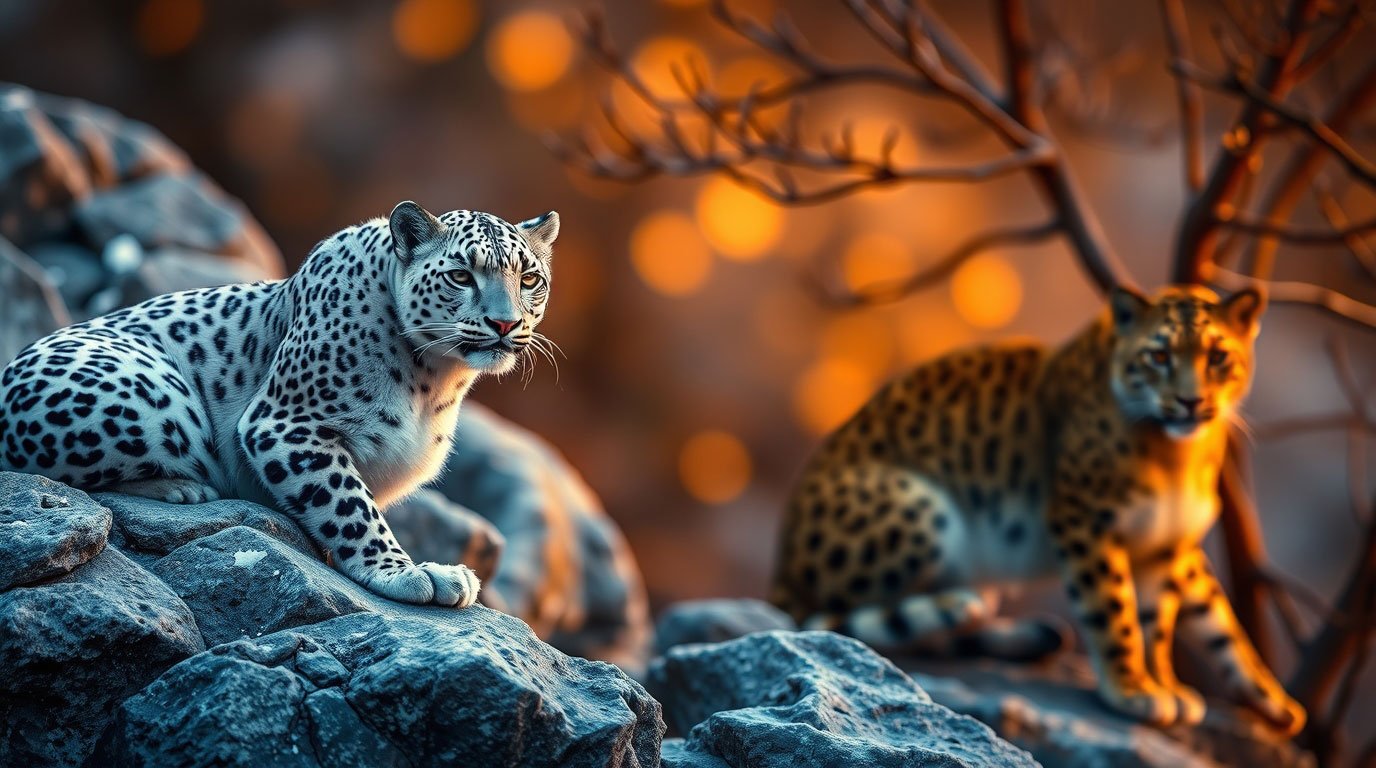Ghosts of the Borderlands: The Epic Journeys of Snow Leopards
High in the rugged Himalayas, where mountains scrape the sky and silence drapes the valleys, a secret world thrives—one ruled by the ghost of the mountains: the snow leopard. Rarely seen, almost mythical in their elusiveness, these cats tread ancient paths not marked on any map. But thanks to modern science, their silent journeys are no longer invisible.
A groundbreaking study in Nepal’s Kangchenjunga Conservation Area, the first to ever GPS-collar snow leopards in the country, has unveiled a stunning truth: snow leopards do not recognize political borders. Four individuals were tracked between 2013 and 2017, and three of them routinely wandered across the borders of Nepal, India, and China. In fact, they spent up to a third of their time in neighboring countries—a revelation that challenges how we think about conservation, sovereignty, and survival.
The Cats Who Walk Between Nations
Meet Lapchhemba, Yalung, and Ghangjenjwenga—not mythic creatures, but real snow leopards who became the stars of this transboundary tale. Lapchhemba, a female, trekked repeatedly across the Nepal-China border, sometimes staying in China for more than a month. Yalung and Ghangjenjwenga preferred the Nepali-Indian side of the range, with nearly half of Yalung’s territory extending into India. These movements weren’t casual strolls—they were purposeful, driven by the search for prey, mates, and safe territories in a high-altitude world.
One remarkable journey had a snow leopard navigating from Kangchenjunga to Makalu Barun National Park, threading through China’s Qomolangma National Nature Preserve. Why? To bypass the terrifying Arun Gorge—a plunge of more than 5,000 meters, which even these sure-footed cats seemed to avoid.
As Samundra Subba, lead researcher from WWF Nepal, put it: “National borders are human constructs—snow leopards don’t recognize them.”
Big Cats, Bigger Ranges
The GPS data revealed something even more astonishing: snow leopards roam across landscapes six to 97 times larger than previously thought. Their ranges, once underestimated, now span thousands of square kilometers, with up to 50% lying outside of protected areas.
This means a snow leopard in Nepal is not just Nepal’s responsibility. It is a shared guardian of three nations. Its survival depends on cooperation, not confinement.
Fragile Freedom
But this transboundary life comes with risk.
In Mongolia, a snow leopard recently traveled nearly 10 kilometers along a border fence with China—trapped by human boundaries in search of a passage that didn’t exist. Such barriers—fences, roads, railways—are silent killers, not through violence, but through fragmentation. They shatter ecosystems. They isolate populations. They stop nature from doing what it’s always done: connect.
So far, in Nepal’s eastern landscape, snow leopards remain lucky. Their ancient trails—between Langtang and Kangchenjunga—are still navigable. But how long before development erases them?
A Call for Collaboration
That’s why this study is more than just science. It’s a call to action.
The Global Snow Leopard & Ecosystem Protection Program (GSLEP), uniting 12 countries including India, Nepal, and China, aims to turn borders into ecological bridges, not barricades. And Nepal’s own Snow Leopard Conservation Action Plan (2024–2030) prioritizes conflict mitigation, community participation, and international cooperation.
Li Xeyang, a snow leopard expert from China’s Shan Shui Conservation Center, sums it up perfectly: “By treating snow leopard conservation as a shared scientific and diplomatic endeavor, range countries can ensure the species’ survival.”
Guardians of the Sky Islands
Nepal hosts 397 snow leopards, about 7–8% of the global population. At elevations nearing 5,848 meters, they patrol some of the harshest environments on Earth—higher than Kilimanjaro. But it's not altitude that threatens them. It's us.
Human-wildlife conflict, retaliatory killings, and encroaching development put these cats at risk. But the path forward is clear: collaboration, not competition. Snow leopards are messengers of unity. They cross borders not to divide us, but to remind us that nature thrives when we work together.
How You Can Help
The snow leopard's journey is not just a biological marvel—it’s a symbol of resilience, adaptability, and peace. And it needs your voice.
Support efforts like Big Cat Rescue that fund in situ conservation and research. Encourage your governments to participate in transboundary wildlife agreements. And above all, remember: these mountain ghosts are not phantoms. They are real, vital threads in the fabric of our planet’s future.
Let’s honor their silent steps by ensuring they can always find a path forward.
Learn more: https://news.mongabay.com/2025/06/snow-leopards-frequently-cross-nepal-india-china-borders-study-finds/



